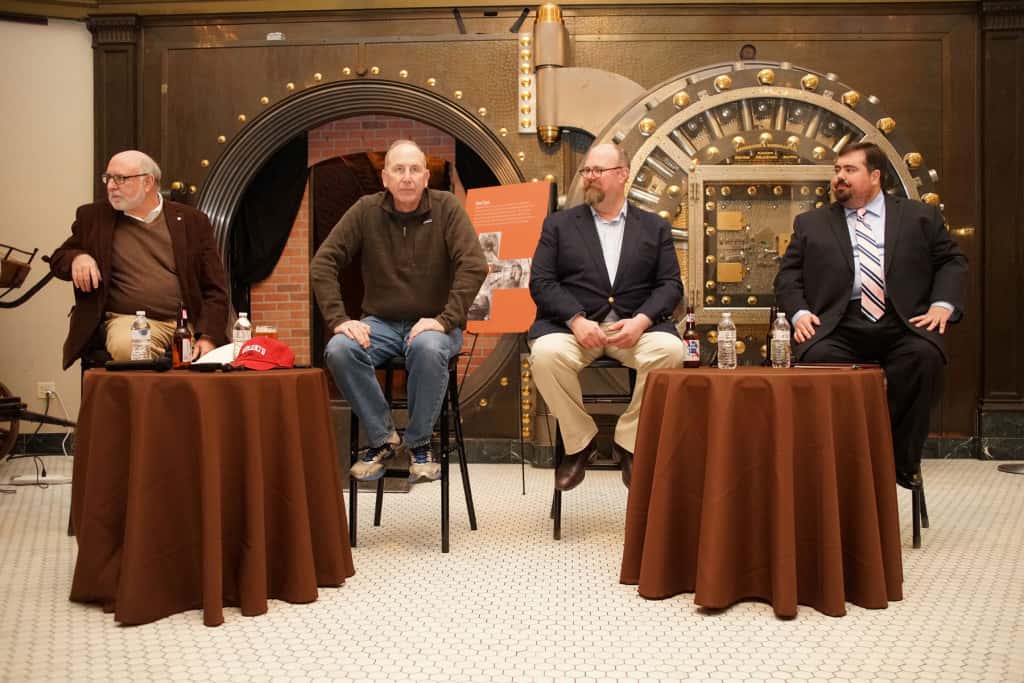
In 2005, a catastrophic hurricane named Katrina, hit Alabama, Mississippi and Louisiana with a ferocity rarely seen. We witnessed the infrastructure designed to protect the city of New Orleans, fail miserably. It should have been a wake up call about the impact of disinvestment in Black communities around the country. Instead, it gave rich developers and the politicians that do their bidding, an opportunity to get rid of a great segment of the Black residents of the city.
The Black people who gave New Orleans its unique “soul” were discarded and sent across the country as so-called “refugees.” The city leaders destroyed the city school system and replaced it with money making ventures, allowing people to get massive funding to build a new school system which was not designed with the interests of the Black children in that city as a true priority. The hurricane gave those who had been thinking for years about getting rid of Black people, the opportunity to send many of them away permanently.
We saw the deaths of those who could not escape the city and the flood waters that inundated the Ninth Ward and other poor Black neighborhoods. The images of dead children floating in the floodwater will stick in my memory forever. The awful conditions at the convention center and football stadium were horrible but made even worse by lies about these poor Black people supposedly raping and robbing their peers. No one cared when the truth came out. They only cared that those rumors reinforced what they felt about Black people to begin with.
Likewise, no one cared when police officers from the city and neighboring communities blocked the escape paths as Blacks tried to save their own lives. No one cared that a number of Blacks were murdered in cold blood by the cops in New Orleans. No one, with the exception of Lt. General Russell L. Honoré, commander of Joint Task Force Katrina, who told the troops to put their weapons down, cared about the suffering of the residents of New Orleans. It was a clear sign back then that the lives of those particular Black people did not matter.
I visited New Orleans with some family members the Easter before Katrina hit. It was a place unlike any other. The flavors of New Orleans are the flavors of its Black residents. The way they reflected their culture spread to the French and English residents during decades of African enslavement. Those Black people made New Orleans, literally and figuratively. My wife and I visited New Orleans again in 2019. What a change. The food was not the same. The city felt different. It had lost that “soul” which made it so unique and enjoyable for us in 2005. We noticed the demographic shift. We asked, “what happened to all the Black people?” while clearly knowing the answer.
What does any of this have to do with Milwaukee you might be asking by now? Some of those disposable New Orleans residents came to Milwaukee. Little did they know they were jumping out of the frying pan and into the fire by landing in Milwaukee.
Milwaukee is clearly the worst place in the country to live if you are a Black adult, child or family. Some people challenge me when I say this, but they are clearly blind or willfully ignorant. That does not mean that some, even many, aren’t doing well. There will always be some Black people that have overcome the odds and are prospering in Milwaukee. However, the majority of Black people in the city are not doing well.
Open your eyes and the signs are clear to see. Far too many prefer to ignore the evidence. They are afraid of neighborhoods they call “sketchy,” “the hood,” “the ghetto,” etc. Even many in my community, use the same terms to describe certain Black neighborhoods in city. It infuriates me that we look at this city and act as if it has always been this way.
I came to Milwaukee as a seven-year-old in 1973 and remember a different city. I remember a city that was clean, peaceful, safe, and a great place to raise a family. I had a stable neighborhood to live in, inside the 53206 zip code. I would never in a million years trade my childhood growing up in that neighborhood for any other place I’ve ever been.
Far too many have either forgotten that Milwaukee, or simply don’t know it ever existed. They assume Milwaukee has always been what it is today. For those children born in the mid-1980s and after, they did not grow up in the Milwaukee I loved. They have missed out on that Milwaukee that helped shape me as a child. A close knit Black community, full of gainfully employed men and women was the Milwaukee of my childhood. I feel horrible that so many who came after me have not been able to have that same experience.
The recession of 1981-82, came into the city like a hurricane, and devastated Milwaukee in a way that people don’t understand. It did not bring high winds and a storm surge but it did as much, if not more damage. You can always rebuild homes and buildings destroyed by a hurricane in time with the proper funds. Under President Ronald Reagan, willful neglect and massive cuts to social safety net programs and youth job programs, and massive policing was the response. If you wonder why Black people don’t hold Reagan in the same reverence as White people do, look back at the 1980s. The benign neglect policies and mindset of the right wing think tanks permeated the minds of politicians on the left and right.
To repair a city hit by the economic calamity that hit so many similar rust-belt cities like Cleveland, Detroit, Flint, Pittsburgh, Chicago and Milwaukee, required the same type of coordinated activity we saw during the years of the Great Depression and the overseas Marshall Plan. Instead we got an attitude that said those people deserve what they have. They are lazy. Their culture is defective. They need to pull themselves up by their bootstraps.
Disinvestment became the theme of the day in Milwaukee. Little was done to stop the city from hemorrhaging family supporting wage manufacturing jobs. Some of those facilities were enticed with tax breaks to move out to the suburbs and eventually the exurbs around Milwaukee. According to data from the Department of Labor, Milwaukee had 91,400 manufacturing jobs in 1977. By 1987, that number had dropped to just 63,900. From 1982 until 2017 50,774 of those really good jobs disappeared from Milwaukee. And they are not coming back because manufacturing jobs are disappearing all over the planet. Business owners build less stuff for people because they’ve found ways to sell them services instead of appliances and make billions doing so.
In 1970 over half of all Black men worked in blue collar jobs in Milwaukee. These jobs convinced them to leave Georgia, Arkansas, Mississippi, Tennessee and other southern states to deal with the frigid winters in Milwaukee. Beginning during WWII, those jobs were the drivers of the increase in Milwaukee’s Black population. In 1940, 8,821 Blacks lived in Milwaukee. By 1950 there were more than 21,000 Blacks calling Milwaukee home. That grew to over 62,000 by 1960, and over 105,000 three years before I arrived in the city in 1973. At the same time White people were following the jobs out to the suburbs. They could move into newly incorporated “villages” and “towns” that were off limit to Blacks. The homes were newly built, cheap, affordable and gained value rapidly. Meanwhile, the tax base of Milwaukee suffered as Whites who still worked in the city took their money with them out to the burbs.
The Milwaukee Black median family income in 1970 was the seventh highest for Blacks in the country, the equivalent of nearly $50,000 in today’s money. The Black poverty rate in Milwaukee was 22 percent below the national average, the median family income was 19 percent above the national average for Blacks. In 1970, 84.9 percent of 25-54 year old Black men in the city were employed.
It was a good time to be Black in Milwaukee, arguably the best time in the city’s history. Twenty years later in the Black community, less than two-thirds of that age cohort was employed. By the year 2000 just 61.2 percent of Black men in that age group had jobs. It got worse. In 2010 only 58.8 percent of Black men in that age cohort was working. All the while, the employment rate for White males in that same age category was 94.5 percent in 1970, 92.1 percent in 1990, 89.7 percent in 2000 and 87.7 percent in 2010. By 2018, 90.1 percent of White men in that age group were employed but only 66.3 percent of Black men were as fortunate.
What happened to send these two groups in such opposite directions? In a word, racism. The old adage about last hired and first fired became the norm for those Black men. They did not all of a sudden become lazy. They did not leave their jobs, their jobs left them.
City leaders stood idly by and did next to nothing. Their solution was job training programs. How can you think job training programs are the solution when the jobs Black people depended on for decades simply vanished? Job training programs primarily create jobs for job trainers and the organizations that get government and foundation money to run them.
As youth gangs from Chicago arrived in the city the latter years of my high school matriculation, the city began to change. The reason these gangs could so easily recruit members, was because the jobs that myself and my peers worked while in school disappeared. The elders used to say, “an idle mind is the devil’s workshop.” They were right on the money.
Crack cocaine came next. The last time I checked, the boats, planes, submarines, helicopters and trucks that transported drugs from Central America, were not owned by any of the Black people in Milwaukee. The federal government’s interdiction efforts did not stop the cocaine from flowing into the city unabated. The government’s so-called “War on Drugs” in hindsight, looks more like a war on Black and Brown people.
Data from the Substance Abuse and Mental Health Services Administration (SAMHSA) tells us that two-thirds of all crack cocaine lifetime users are White people. However, the face of crack cocaine is a Black face. All of the stories of fictitious crack babies are attached to Black faces in our mind. When we hear the term crackhead, we see a Black face. The media, print as well as television, pushed this narrative to get more readers and higher ratings. No one cared that it was not an accurate portrayal of crack users nationwide.
Despite the fact that 66.1 percent of lifetime crack users are White, in 2017, White people accounted for just 4.2 percent of federal prisoners serving crack sentences. Blacks on the other hand are only 17.8 percent of lifetime crack users but 88.1 percent of those in federal prison for crack cocaine are Black. These disparities are caused by two factors working in concert with one another. An over-representation of Blacks arrested and charged with drug crimes and just as importantly an underrepresentation of Whites arrested and charged with drug crimes is the result of selective policing.
Overall the SAMHSA data tells us that 70.2 percent of lifetime drug users are White, 11.3 percent are Black and 12.7% are Latino. Whites are over-represented as drug users but account for just 32.4 percent of state prisoners who are serving time for drug offenses. Blacks and Latinos make up 30.5 percent and 20.3 percent of state drug prisoners. Their over-representation is a consequence of the under policing of White communities. If police had just as vigorously policed White neighborhoods these disparities would not exist. There were then and still are plenty of White people using illicit drugs. The “lock them up and throw away the key” mindset of the 80s, when Blacks were addicted to crack, have shifted to a new “public health crisis” as White people are strung out on heroin and other opioids. The hypocrisy in the responses is palatable.
The DEA and police departments around the country knew that White people were using and selling crack but they concentrated their efforts in “the hood” and “barrio.” As Whites sat in rural communities devastated by manufacturing job losses, they reached for a crack pipe to soothe their pain. This was hidden from view by overzealous reporters intent on getting a story about those terrible “super-predators” and “drug fiends” in the “hood.”
Members of Congress used “tough-on-crime” rhetoric to increase their odds of winning elections. Both the Democratic and Republican party’s were responsible for the more punitive laws which led to over two million Americans being incarcerated in our prisons and jails currently. Their apologies now for passing harsh sentencing laws at the federal level are mostly empty platitudes. How many have apologized for state laws which drove most of the incarceration? Wisconsin has built more that twenty prisons since I graduated from high school.
Many members of the Black community asked for this tough on crime approach because their communities were being victimized. They should have paid more attention to where the drugs were coming from and focused their calls for help there instead. The token “reforms” passed in the past few years will not make a dent in the prison population. The highly lauded First Step Act, only applied to about 6,600 of the 181,000 people in federal prison and not a single person in the much larger state prison apparatus. Real reform looks different than what we have mostly seen by politicians. Grassroots advocates and academics have called for stronger measures for years.
The law enforcement focus on Black and Brown communities like those in Milwaukee led to a huge increase in the incarcerated population. The revolving doors on our prisons in Wisconsin have led to Wisconsin having the highest Black male incarceration rate in the nation.
Much of that is driven by Milwaukee. According to a July 2020 report by the UW-Milwaukee Center for Economic Development (CED) citing Vera Institute data, “Milwaukee posts one of the nation’s highest Black incarceration rates, just below St. Louis and Oklahoma City; over four times the rate of places like Boston or Charlotte; and twice the rates in Birmingham or Atlanta.”
“In 1990, the Black incarceration rate in Milwaukee County was 1,571 per 100,000 – as it happens, among the lower rates for Blacks in the nation’s largest metros. There was, however, already a huge racial disparity in incarceration: The Black rate was 12-times the white rate in Milwaukee…the Black rate soared in Milwaukee during the 1990s, tripling between 1990 and its peak in 2003. Although the Black incarceration rate has come down since 2003, the rate today nonetheless remains well above what it was in 1990. Interestingly, the white incarceration rate in Milwaukee County has also soared: it too almost tripled between 1990-2003, and today remains well over 2.5-times as high as the 1990 rate. Milwaukee, in many ways, has become a more “carceral” county across the board, although the data make clear that the impact of mass incarceration has been disproportionately felt in the African American community.” – Marc V. Levine, “The State of Black Milwaukee in National Perspective: Racial Inequality in the Nation’s 50 Largest Metropolitan Areas.”
Professor Levine and his team at UW-Milwaukee has consistently provided us with invaluable insight into what has transpired in Milwaukee and the impact on the Black community for decades. I have cited his data in many of the presentations I’ve done around the city and state. He is a hidden treasure. He has been honest enough to be considered persona non grata by some elected officials. For those who want the most up to date, concise information, data and analysis of what has happened to the Black community economically in the last 50 years you must visit the UW-Milwaukee CED website.
Professor Levine has been a voice of policy change because he has not just analyzed the problems, he has offered solutions for years. Unfortunately, they have mostly landed in front of the closed minds of public policy makers in Milwaukee.
As he says in the report, far too many people think they know it all and don’t need new data or reports. They could not be more wrong. Things are progressively getting worse in Milwaukee’s Black community with little positive changes coming from our elected officials. The report states that, “when we examine historical trends in some key areas, the results are equally grim: Black Milwaukee is generally worse off today than it was 40 or 50 years ago.” I will borrow some of the statistics from that July 2020 report to show the ugliness we face. Keep in mind that the economic effect of the ongoing pandemic means significantly harder days are ahead for Black Milwaukee.
“Black median household income in Milwaukee, adjusted for inflation, has declined by an astonishing 30 percent since 1979. Today, Milwaukee has the lowest Black median household income, adjusted for metro area cost-of-living differences, of any of the nation’s 50 largest metropolitan areas.”
“…the Black poverty rate in Milwaukee – 33.4 percent — is the highest Black poverty rate among the nation’s largest metropolitan areas, and almost five times the white rate.”
“Milwaukee has the second-lowest Black homeownership rate among the nation’s largest metropolitan areas (27.2 percent). Only Minneapolis’ is lower.”
“Only two-thirds of Black males between the ages of 25-54 (prime working-age adults) were employed in Milwaukee in 2016-18, the 3rd lowest rate among large metros. (By contrast, 85 percent of prime-age Black males were employed in Milwaukee in 1970). The Black-white gap in male employment rates in Milwaukee is the second largest in the country (only Buffalo’s is higher).”
“A white high school dropout is over twice as likely to be employed in Milwaukee as a Black dropout; and white high school dropouts post a higher employment rate than Black high school graduates in Milwaukee.”
“Only 17.4 percent of Black males, and only 14.6 percent of Black females in Milwaukee make more than $40,000 a year (compared to 46.3 percent of white males).”
I could go on, but I think by now you get the point. The carnage is unfathomable. It will only get worse as the pandemic’s economic impacts continue to play out.
I’m often asked for solutions to the ills of the city. It’s really hard to articulate how bad the situation is. I’ve compared the last fifty years in Milwaukee to a freight train. Once it starts rolling, it’s nearly impossible to slow it down without extraordinary measures. In many respects the things that have not been done over decades makes it so much harder to address now. It’s like that pebble that hits your windshield, leaving a small divot. If you don’t fix it right away eventually a large crack will spread across the entire windshield.
We’ve been watching this crack grow in Milwaukee for decades. Mark Levine and many others, including members of the Black community have been pushing for something to be done. I’ve spent years telling people how we got here. I defer to the people who know how to work on alleviating these issues to come up with credible solutions. Our elected officials have not done nearly enough.
Piecemeal programs have been the order of the day from our leaders. They don’t work, because they are not designed to destroy the causes of the economic mess in Milwaukee. They are like band-aides on a wound that needs not just a tourniquet, but one that also requires surgery.
Much like hospitals are being overwhelmed by COVID today, Milwaukee will be overwhelmed by the economic impact of the pandemic in a way that we are clearly not prepared for. As is so often the case here, no community will suffer as much as the Black community. We need a groups of people who are really concerned and proactive to prepare us for the coming storm. Who will step up to the plate? What plans are being drawn up right now for what we know is on the horizon?
“Those who fail to plan, plan to fail.” – Malcolm X
© Photo
Аnеtе Lusіnа














